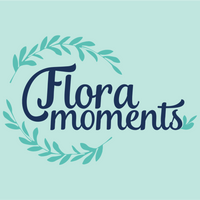3 Types of Flowers With Medicinal Purposes and Healing Powers
Luther Burbank once said in a quote that flowers are the “sunshine, food and medicine for the soul.” Who doesn’t feel good after seeing a bouquet of freshly plucked roses? Aside from their beauty, flowers can also help with healing certain illnesses.
You can even use their parts like petals and stems as a liquid tonic. Here are three types of flowers with medicinal and healing purposes:
Wild Roses
In botany, wild roses can be used for herbal medicinal particularly the petals and fruit (rosehip). The petals have anti-inflammatory and anti-parasitic properties. They can also be used as a mild sedative and laxative. Rose petals can also treat bruises, incisions, rashes and wounds. Do you have a sore throat? The petals can be taken internally to ease inflammation. If you experience irregular or delayed menstrual cycles, you can use rose petals to normalize your period. Roses can be described as emmenagogue herbs, which are substances that can help in stimulating or regulating menstrual flow. Rosehips can also help in easing discomfort and pain during a monthly menstrual cycle. In addition, rosehips are perfect for teas and as an alternative preservative for fruit recipes. Rosehips are rich in vitamin C, and they also contain vitamins A, B3, D and E. The fruit can also act as a preventive nutritive during flu season, aside from its antioxidant properties against free radicals that can be linked to its high flavonoid content. Some of the common recipes for using roses include a base tea infusion. You’ll need two to four teaspoons of dried petals and pour a cup of boiling water over them. Cover and let it steam for at least 10 minutes. You can mix the base tea with a teaspoon of honey to soothe a sore throat and suppress a dry cough. Add some lemon to taste and if you have a stubborn cough for the last few days. As a digestive tonic, you can mix the base tea with a teaspoon of the dried herbs and drink it without milk or sugar. You can add some black tea to the mixture to ease severe diarrhea. If you’re making rosehip tea, mix four teaspoons of dried rosehip with a cup of warm water and let it simmer for at least five minutes.

Sunflowers
Sunflower tea made of the flower’s leaves can be used as an astringent, diuretic and expectorant. Crushed sunflower leaves can also treat sores and insect bites. You can also make tea by using the flowers as a treatment for respiratory ailments. While the seeds are more commonly eaten as a snack, you can also use them to treat pulmonary issues. Decocted sunflower roots can be used as a warm wash for easing aches and pains from rheumatism. Sunflower seeds can be turned into butter or seed yogurt, although it can be difficult to extract them because of their small size. Germinated seeds are best used for seed yogurt, while roasted ones can be a substitute for coffee and hot chocolate. Young sunflower buds can be steamed and eaten like globe artichokes. Sunflower oil is said to be similar to olive oil in terms of quality. In fact, using sunflower oil with around 20 grams of high-oleic acid per day as a substitute for other oils can decrease a person’s risk factor for heart disease. Some brands of sunflower oil can also help in treating athlete’s foot.

Calendula Flowers
Also known as pot marigold, the flowers can be used against muscle spasms. They can also restart an irregular menstrual cycle and reduce fever. If you have a sore throat, you can also use calendula to ease inflammation. You can also apply it to the skin to treat swollen areas and wounds. Since the flowers have been used as herbal medicine, there are several studies that showed the benefits of using calendula. An initial study revealed that a calendula spray can prevent infection and reduce foul odor from diabetic people with foot ulcers. A calendula ointment can also help with treating exfoliative cheilitis (peeling lips) if used for at least 15 days. If you have inflamed gums, there a study that claimed the efficiency of using a calendula tincture for six months. According to the research, those who use the tincture can reduce the possibility of bleeding and inflammation by up to 18% compared to the use of water alone for a mouth rinse. It can be an alternative to chlorhexidine mouthwash, which can stain teeth for some people. Another study also indicated that calendula ointments can reduce the likelihood of radiation dermatitis for breast cancer patients. You should ask a dermatologist about this since results can vary for every patient.
What Are the Side Effects?
Herbal medicine has certain side effects such as allergic reactions. You should still consult a doctor when symptoms don’t disappear even after using herbal and artificial medicine. If you are pregnant, you shouldn’t experiment with herbal medicine and take it by mouth. For instance, calendula is likely unsafe for oral intake since it might lead to a miscarriage. The same advice applies to using roses or sunflowers as a topical ointment. It’s not recommended to use more sunflower oil than necessary when you are pregnant. Despite the lack of information about its adverse effects, it’s better to stay on the safe side of consumption. You should always ask your doctor before introducing a new item to your diet.











